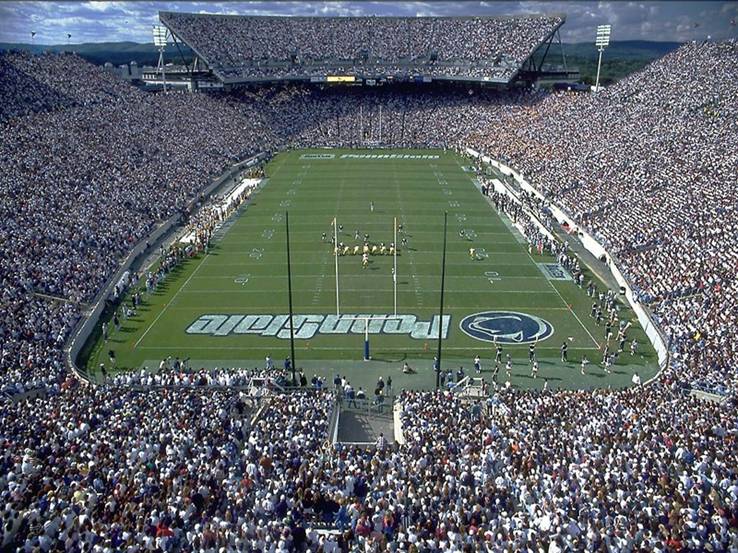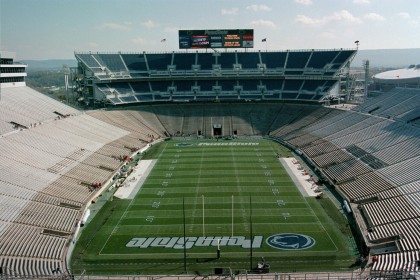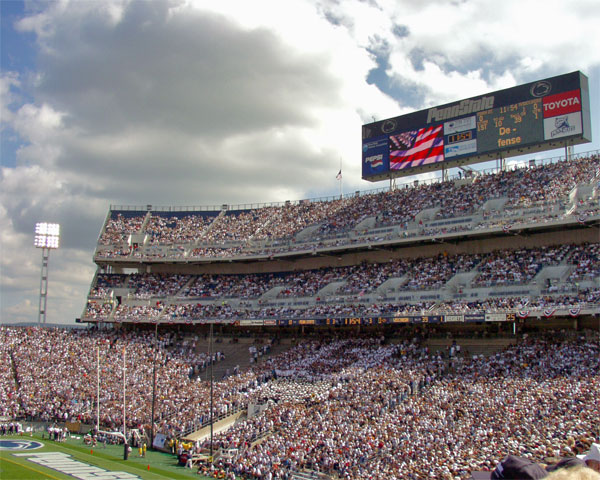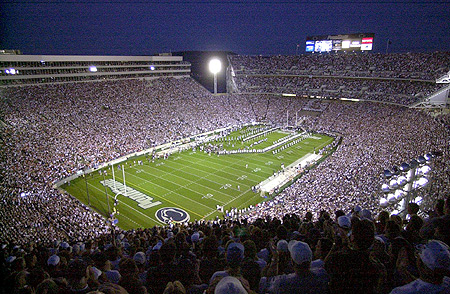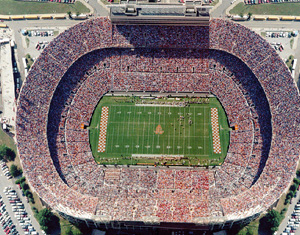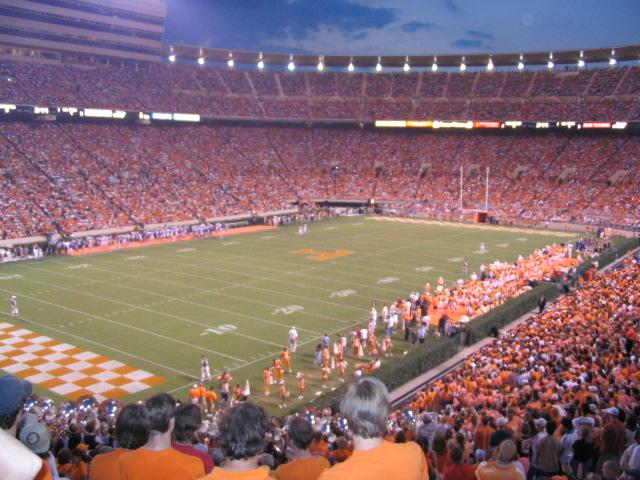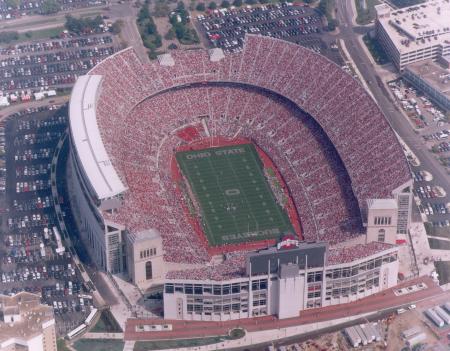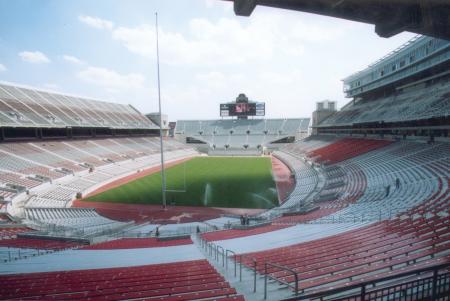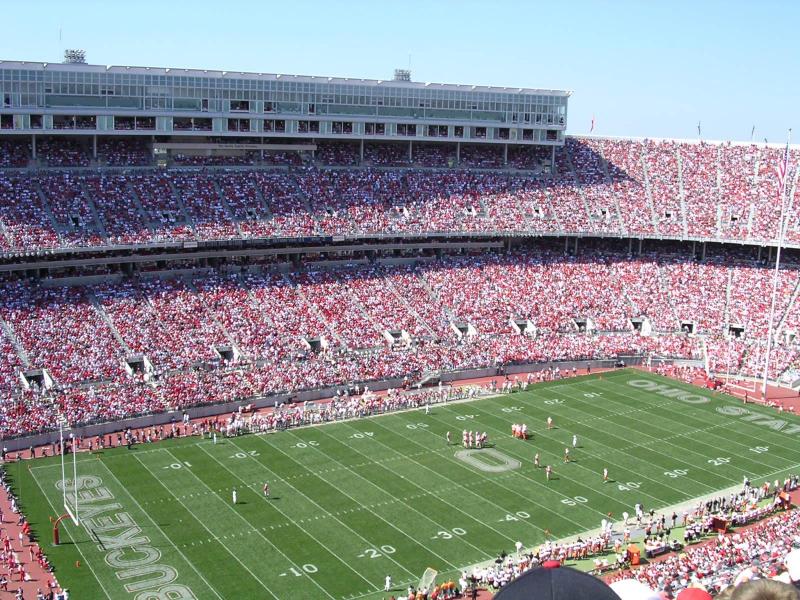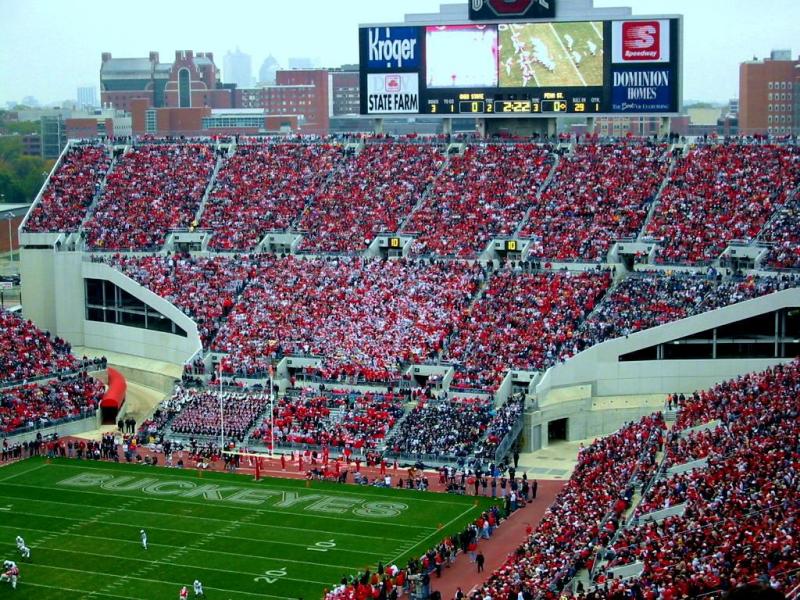I'll go by capacity (the 100k+ monsters first up)
-----------------------
Start with
#1 Michigan Stadium, University of Michingan (Ann Arbor, Michigan- not far SW of Detroit) - Big Ten conference.
Capacity: 107,501
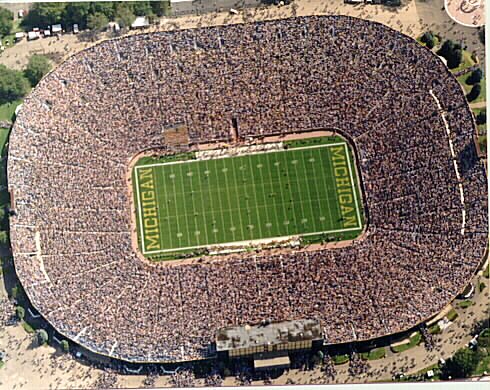
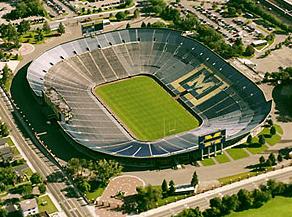
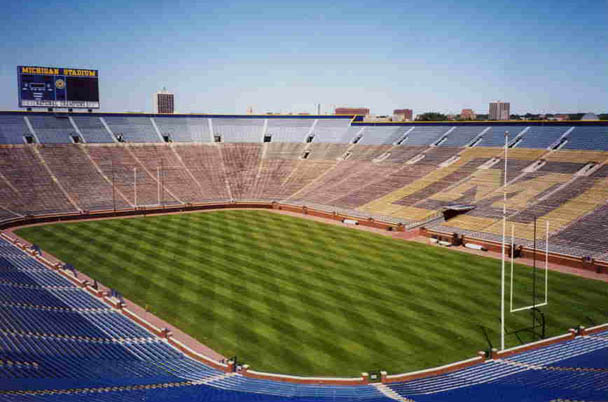
The University of Michigan Wolverines played their inaugural game at Michigan Stadium on October 1, 1927 against Ohio Wesleyan. The official capacity when Michigan Stadium when it opened was 84,401.The entire single tier grandstand circles the playing field and there is a
Various expansions bumped the capacity up to 100,000 and the most recent addition to Michigan Stadium occurred before the 1998 season when 5,000 seats where added bringing the current capacity to 107,501.
For nearly 200 games the Wolverines have attracted more than 100,000 fans and hosted 111,238 fans in a game against Michigan State on November 20, 1999. The stadium is undergoing a renovation and expansion project, which is expected to be completed by 2008. This will include replacement of all bleachers, widening of individual seats, the addition of luxury boxes on the east side of the stadium, expansion of the press box, and the addition of upper-deck seating at one or both end zones. The stadium's official capacity at the conclusion of this project is yet to be determined.
UM has fierce rivalries with many teams, including Michigan State and Notre Dame; however, its football rivalry with Ohio State is widely considered to be the fiercest in all of college athletics. In the 2005 season the Wolverines averaged 110,915 people for each of their 7 home games. They finished the season with 7-5 overall record and a 5-3 record within the Big Ten (their home conference) finishing in third-place finish which led to an invitation to the Alamo Bowl in San Antonio, Texas. They lost 32-28 to Nebraska.
Edit on 2 June 2006:
MICHIGAN
Previous home: Regents field.
Regents Field served Michigan football for its first quarter century (1883-1905). Originally accomodating just 400 fans, it was expanded through the years to seat 17,000. The Wolverines compiled a 87-2-3 record in all games at Regents Field.
The Big House




Spring training and renovations to the bowl.


Michigan stadium under construction.
http://www.umich.edu/~bhl/stadium/stadtext/scrapcov.htm
Slideshow of Michigan Stadium’s construction during the 1920s– highly recommended!
Planned renovation:
----
May 23, 2006, 7:53 PM ET
Michigan Stadium adding luxury boxes, seats
Associated Press
DEARBORN, Mich. -- Michigan Stadium will get luxury boxes and more seats as part of an estimated $226 million renovation to the American sports icon.
The University of Michigan Board of Regents voted 5-3 in favor of the plan, which would increase the stadium's capacity by about 750 to 108,251. The final design and construction contracts still require board approval.
"You've got some major challenges at the Big House," Michigan athletic director Bill Martin said. "We initiated a process to address those challenges to come up with a financial model that would pay for it without putting a burden on the backs of all of our fans in the seats.
"What you saw today was a major step forward; it's a step that is really a beginning and not an end at all."
The target for completion of work on the home of the Wolverines is 2010. About 83 indoor suites and 3,200 outdoor club seats will be added, the university said, while widening seats and aisles will cut seats in some parts of the stadium.
The project will feature building structures -- six and eight stories tall -- on the east and west sides of the stadium and include bench seats, new media facilities, restrooms, concessions areas and an additional concourse.
Details of the plan first were reported Friday by The Ann Arbor News, which obtained details through a Freedom of Information Act request.
Michigan Stadium was built in 1927 at a cost of $950,000. Expanded several times over the years, it is one of the largest football stadiums in the country with a seating capacity of 107,501.
The athletics department proposed that Michigan build private suites like those that many colleges have added in recent years. But the plan had drawn some opposition from Michigan football fans.
--
Simmo says: I’ve read on some UM blogs that despite the huge cost of the new stands the capacity of the stadium probably won’t increase because of the widening of the seats in the main bowl. Where have we heard that before?







